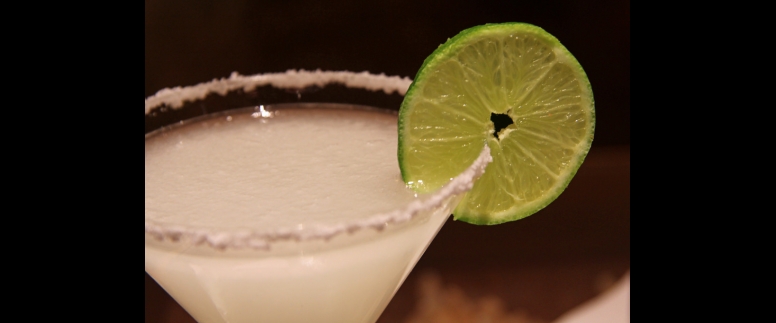
So, after yesterday’s post, you probably went out and enjoyed a refreshing margarita last night and dreamed you were sharing it with Rita Heyworth…
That’s great, but as promised, today is the rest of the margarita story, with the most probable genesis of the famed libation. Enjoy!
American Bars chatted about several legends of the source of the margarita mystique. However, we saved the most likely tale for today. The margarita's most circulated origin story is of Texas socialite Margarita Sames who claimed to have thrown the cocktail ingredients together while hosting one of her two-week ragers down in old Acapulco, Mexico in 1948. Her well-connected friends—movie star John Wayne, hotel magnate Tommy Hilton, and L.A.'s iconic Tail o' the Cock restaurant owner Shelton McHenry—were so enamored with Sames' newfangled cocktail that they spread the word. And here is the convincer: her story even appeared in a 1953 issue of Esquire, which marked the margarita's first printed mention.
Despite all the romantic tales of cocktail tributes and beautiful women, however, it's more than likely that the margarita is simply a tequila version of the pre-Prohibition cocktail the Daisy—"margarita" being the Spanish word for "daisy"—with lime and grenadine. Or, it's a variation of the Picador, a cocktail whose similar recipe was first printed in William Tarling's Cafe Royal Cocktail Book in England in 1937.
Regardless of the margarita's origin, it wasn't until 1971 that the cocktail underwent the first of many transformations on its way to the hearts of American drinkers.
Dallas restaurateur Mariano Martinez wanted an easier and faster way to make blended margaritas, you know, a refreshing cooler that is essentially filled with crushed ice. Variations of this style of margarita has had proliferated American bars since the 1950s. Still, crushing ice to a fine grain was tough and inconsistent.
Finding inspiration from a 7-Eleven Slurpee machine, Mariano retrofitted a soft serve ice cream machine to dispense the slushie cocktail for his new Mexican restaurant, Mariano's. However, he found that in order for the machine to turn out a great-tasting product, he had to add a lot of sugar to his father's margarita recipe. And boom! the very first frozen margarita machine was conceived (it now resides within the Smithsonian).
The appliance's ease of use and countless fruity flavor options—from strawberry to watermelon to pomegranate to mango—was a natural fit for the newly popular wave of Tex-Mex restaurants that spread throughout the country in the '70s and '80s, and other models of the frozen margarita machine began to appear. Eventually, the frosty drink, like the daiquiri at that time, made its way to sports bars, college bars, poolside and beachside bars, dominating the era which many consider the dark age for cocktails.
The frozen margarita machine was also popularized by singer Jimmy Buffett's Margaritaville song, which he released during the late '70s. Then, about a decade later in 1987, he opened his first Margaritaville restaurant in Key West, Florida, and that initial location went on to grow into an empire of restaurants, hotels, and beverage products.

Frozen margarita mixes and machines (aka branded blenders) infiltrated consumers' homes in the '80s, granting the beholder a vacation in a cup. Because bar-goers became accustomed to the dispensed sugary cocktail, Day-Glo green margarita premixers took the place of the classic at bars. All a bartender had to do was add tequila.
But hope for a better cocktail eventually appeared in the form of a stripped-down version of the classic margarita recipe. In 1990, Julio Berjemo, who was bartending at his family's Mexican restaurant, Tommy's, in San Francisco, decided the orange liqueur traditionally added to a margarita didn't pair well with the drink's tequila. So, he swapped it for agave nectar, which enhanced the agave spirit's flavor. This clean sipper groomed the margarita for the upcoming cocktail renaissance and made Berjemo—now an American ambassador of Mexico’s National Chamber for the Tequila Industry—a living legend among bartenders.
Tommy's Margarita highlighted the difference natural ingredients can make in a cocktail. Fast-forward to present day, and the craft cocktail trend—which evangelized the importance of fresh ingredients and quality spirits—made the poor quality frozen margarita obsolete. And today, according to a 2016 consumer survey, the margarita is the most popular cocktail in America, followed by the daiquiri.
Well, I don’t know where you are or will be this weekend, but here at American Bars in SoCal, that temp gauge is set to hit the mid 90’s. Time for Margaritaville!




